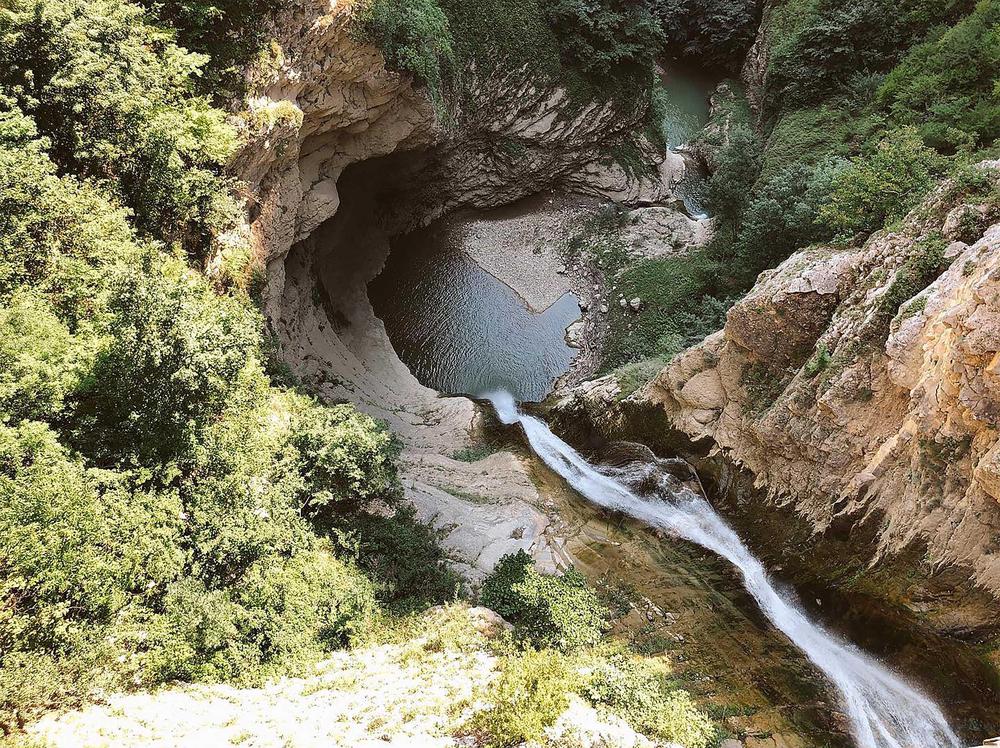Khvamli or Khomli, as it’s known in Georgian, stands as a significant limestone massif located within the heart of western Georgia, claiming its space across the territories of Tsageri and Tsqaltubo municipalities. At an impressive height of 2,002 meters (or 6,568 feet), this double cuesta landscape is predominantly comprised of Cretaceous limestone units, all the while being generously draped in mixed forest vegetation. One cannot help but notice its striking southern bluff face, rising abruptly to a height of 300 meters (roughly 984 feet). This geographical marvel doesn't just stop at its limestone and forested glory; both cuestas present northward-facing scarps, intricately perforated by a myriad of sinkholes and caves, adding layers of complexity and intrigue to its structure.
The cave systems within Khvamli are particularly noteworthy, not just for their geological formations, but for their place in history and folklore. Tekenteri takes a special place among these subterranean wonders, unique in its single entry point through the hollow of a venerable beech tree. This and other caves have found their way into 14th-century Georgian chronicles, narrating tales of royal treasures hidden within. The mountain also carries a mythical air, as local legends vividly describe the torment of Prometheus, bound and left at the mercy of a relentless raven on the bluffs of Khvamli.
Present within Lechkhumi, at the converging point of Tsageri and Tskaltubo municipalities, Khvamli massif not only serves as a geological and botanical haven but also as a cultural and historical hub. The site hosts the church of St. George, becoming a focal point of celebration during Khvamloba, attracting numerous visitors every year. From its towering heights, the massif offers expansive and breathtaking views, leaving an indelible mark on all who venture its way. Among its caves, medieval paintings made with red paint have been preserved, further enriching Khvamli’s historical tapestry.
Literary references and historical records intertwine, bringing an additional layer of richness to Khvamli’s narrative. The Georgian Chronicles reference the massif, capturing a moment in time when the kingdom and its treasures were divided, leaving a substantial portion within the immovable Khvamli cave. French writer Jules Verne, too, found inspiration in Khvamli’s myths, mentioning the mountain in connection with the famous Prometheus in his novel "Keraban the Inflexible".
The Khvamli Mountain, as such, stands as a multifaceted entity within Georgia, drawing in those intrigued by nature, history, and the allure of myths. With its rocks, meadows, and forests, it’s a journey across time, space, and the realms of reality and legend, leaving every visitor with stories to tell and memories to cherish.












